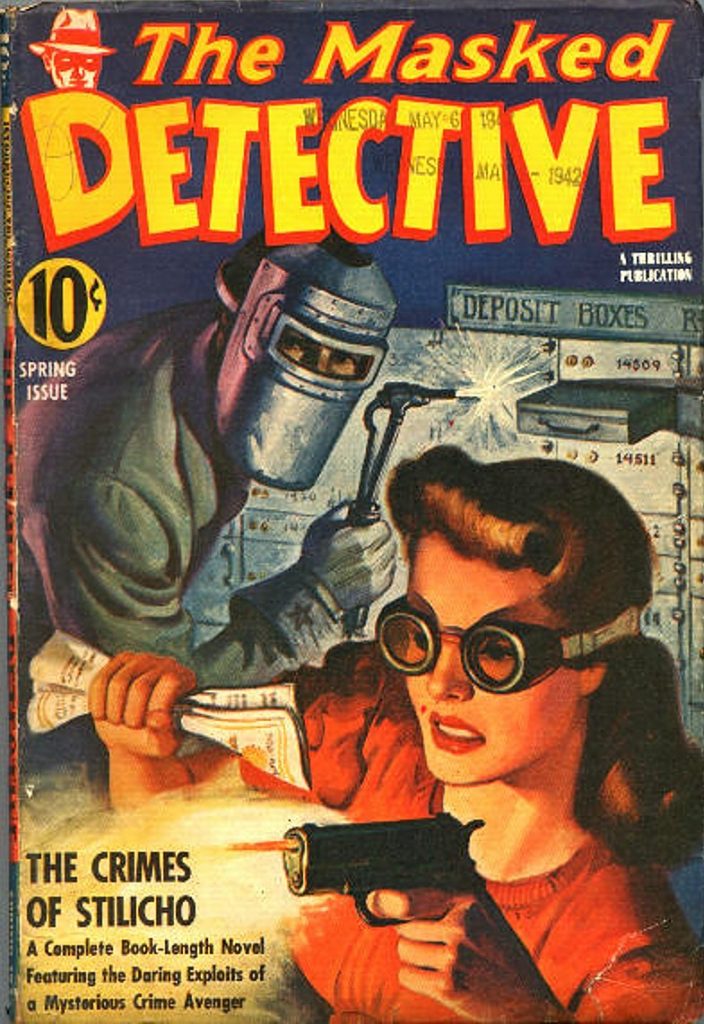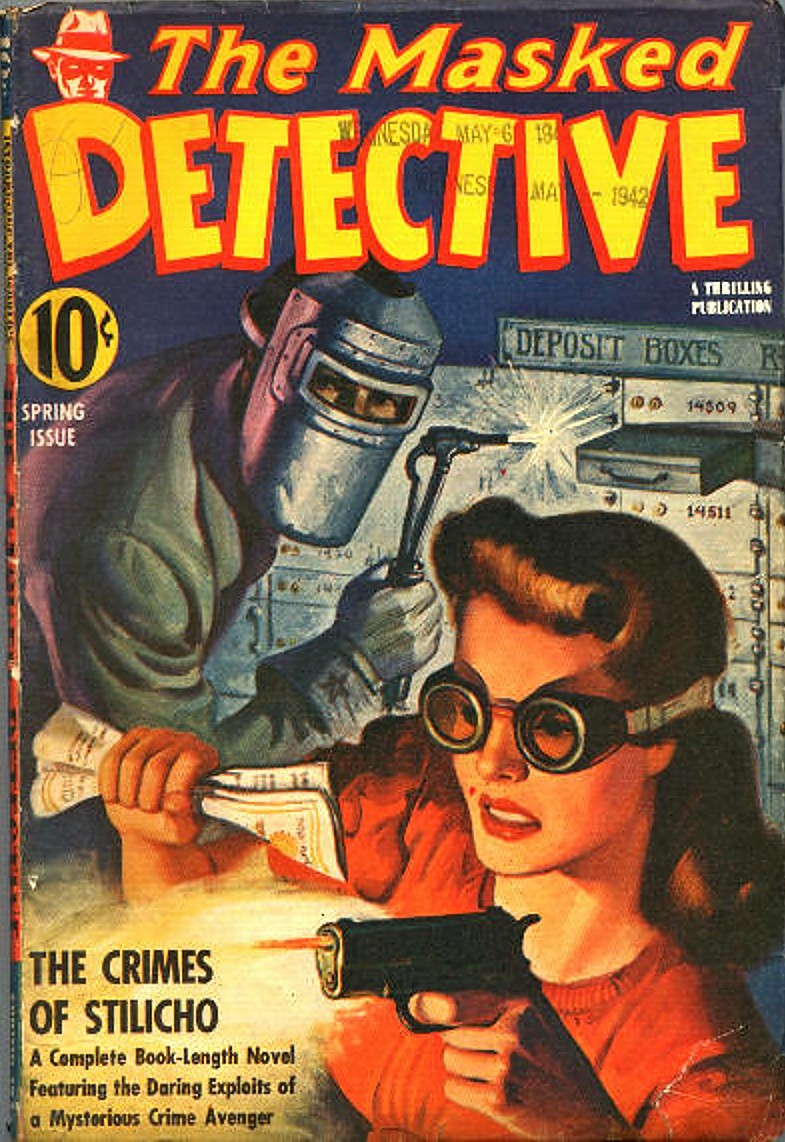Magazine Review: The Masked Detective Spring 1942
The Masked Detective is one of the lesser-known hero pulps, with a dozen quarterly issues between 1940 and 1943. The detective, usually just called “The Mask” in-story, was ace reporter Rex Parker for the New York Comet. He’d been persuaded by his girlfriend, society columnist Winnie Bligh, to put his keen investigative skills and knowledge of la savate to use fighting crime directly.

A domino mask might not seem like the most effective disguise, especially for someone like Rex Parker who has “movie star looks.” So he also wears special makeup underneath designed by Winnie so that even if a criminal does manage to pull off the Masked Detective’s mask, they still have no idea who he is. Winnie also creates new makeup disguises for Rex (though afterwards he’s able to recreate them himself) and he spends more time in these than in the actual mask.
The Spring 1942 issue begins with “Bullets are Dynamite” by Robert Wallace. This short shocker has an armored car driver who’s concealing his criminal past until he’s approached by his old gang to help them pull a blag. The title turns out to be more literal than expected when he finds a way to get rid of unwanted witnesses.
The main event is “The Crimes of Stilicho” by C.K.M. Scanlon. The art treasures of Europe are being shipped to the United States for safekeeping during the war. But now someone is destroying these works of beauty, murdering people in the process! This proves to be the work of Stilicho, who styles himself after the Vandal chieftain of the Fifth Century who destroyed artworks of the Roman Empire. His warnings are delivered in Latin on scrolls of parchment, but his methods are of modern warfare.
Rex Parker has to wade though a web of red herrings and suspects to figure out Stilicho’s real motive and identity. (One huge red herring is that one of the suspects had belonged to a group named “Sons of the Flaming Cross” until he allegedly realized their Fascist leanings. Seriously, dude, the name should have tipped you off that they were bad news.)
Winnie Bligh turns out to be the kind of young woman who can get herself out of being knocked out and tied up, which is a good thing because it happens more than once. Rex manages this no less than three times himself.
This is a fast-paced, action-packed story; you should be able to piece together most of the mystery before Rex explains it at the end. As with many pulp hero stories, it relies on the police being far less clever than our protagonist.
Content note: Several gruesome murders; Stilicho is especially fond of ancient Roman execution techniques, thankfully never finding a good time to do a crucifixion. Some mild ethnic stereotyping.
“Moon Over Murder” by Fredric Brown closes the issue with a young artist in Cape Cod dealing with treasure-hunting criminals. The twist is that the big city crooks don’t recognize treasure when they smell it!
“Under the Domino” is the editorial section, mostly about the next issue’s topic, the Panama Canal. There are brief excerpts from letters to the editor that are just publicity blurbs.
Overall a solid pulp experience with very little of what sometimes makes the modern reader cringe. My copy was an Adventure House reproduction, but you may be able to find the stories elsewhere.

